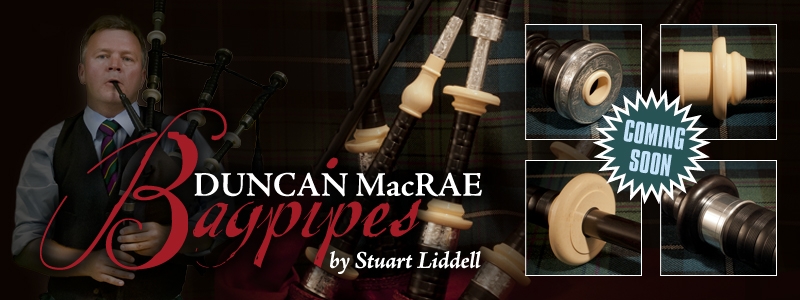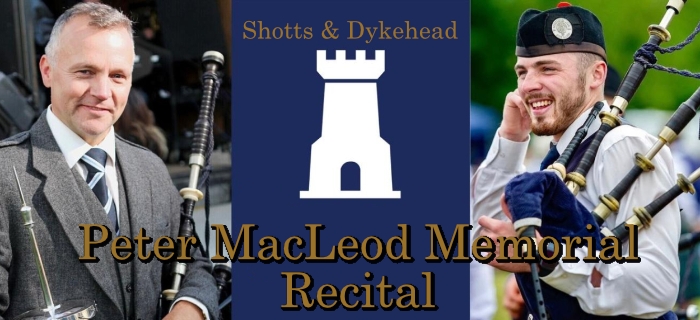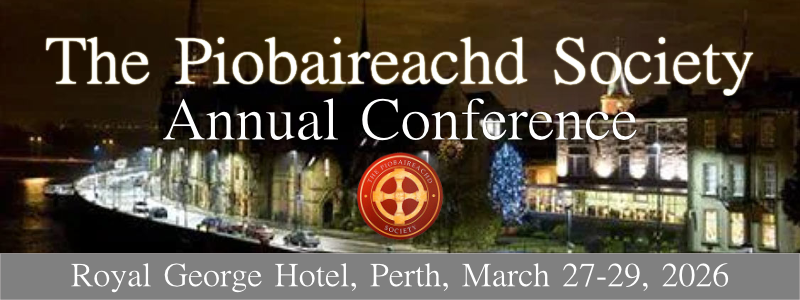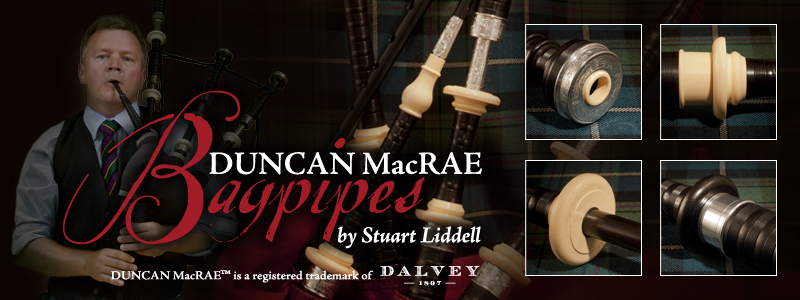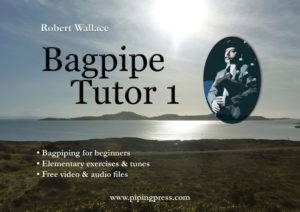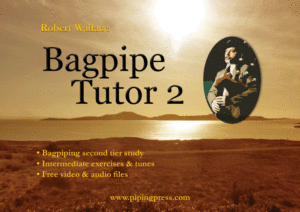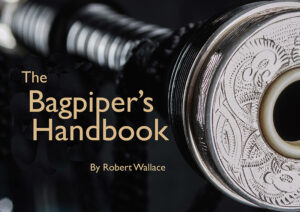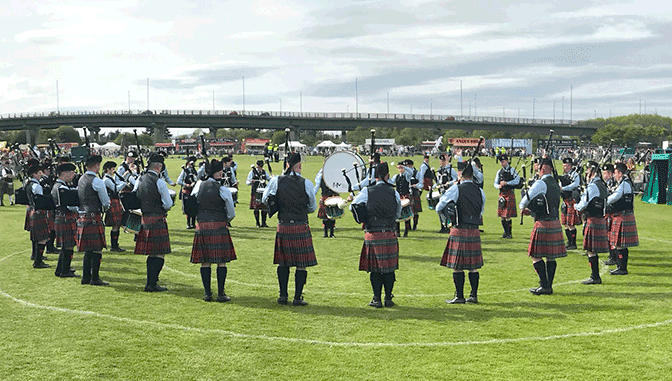
The circle formation for pipe band competitions has remained constant since the early days of the original SPBA. The concept was based on the principle of the arena allowing bands space to enter and leave whilst also allowing spectators maximum opportunity to see and hear the performances, in effect from three sides of a roughly square arena.
The other principle was to allow bands to march into a circle to establish the timing, and then form a circle to contain the optimum balance of sound, whilst also allowing the players to face and observe each other to facilitate integration.
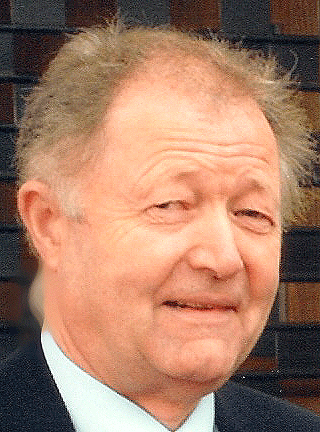
By Alistair Aitken OBE
There have been attempts over the years to change to other formations, all of which have proved inconclusive due to the effect on aspects such as tonal balance, sound projection, the inability of the players to watch each other, and where to best position the adjudicators and spectators. The circle formation has survived, possibly without full understanding of the original reasoning, but in the meantime many bands have adopted different methods of positioning players which are inconsistent with the initial concept.
Few have all their players fully in the actual circle, as was the original intent, apart from the bass drummer. Some now have their tenors partly or fully within the circle; some tenors face the pipers; some face the snares; and some even have different formations of tenor drummers within the circle. These variations in positioning all have a bearing on how the overall sound projects.
Taking into account these variations of adjudicator positioning and formations, it is not difficult to envisage why there could be differences in results – the judges are hearing bands in different ways. Whether they are static or moving round the band, the sound projection can differ significantly depending on player formation.
Arguably there would be more consistency if the players in each band were positioned the same way and all the adjudicators adopted the same vantage point, either static of otherwise. Due to the size of many modern bands, it is virtually impossible for two piping judges to hear the same things if they are on opposite sides of the circle. It is quite possible for the spectators to hear a mistake from a distance which is missed by the judge positioned only three metres from the players on the other side of the band.
It is also difficult to envisage how a drumming judge can accurately assess the musical interpretation and musical effect emanating from a drum corps when standing directly behind it. There is a strong argument that the overall effect can only be heard by listening to the drumming coming through the pipes. Similarly, there are grounds for arguing that both drumming and ensemble adjudicators should be assessing the musical impact of the drummers in relation to the pipers in a similar way. How can this be achieved consistently if these judges are on opposite sides of the circle?
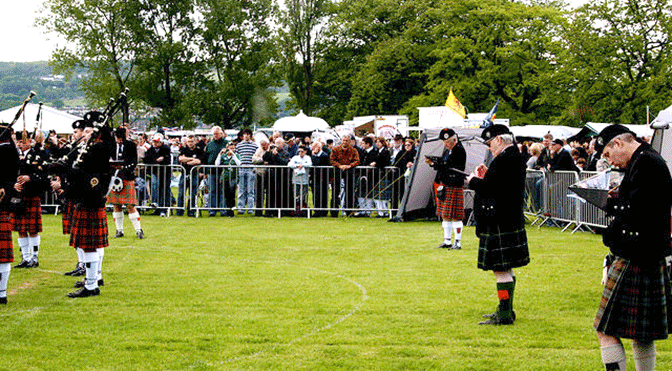
To put these arguments into context, adjudicators in the Grade 1 arena at the Worlds have to assess the performances from a position which must be a minimum of three metres from the outer circle, irrespective of their preferred vantage position; but, as I have said, sound projection is affected by the player formation of each band. Spectators on the two-sided stand at Glasgow Green hear the performances in a different way. For them the sound projects upwards and is not affected to anything like the same extent by the positioning of players.
Those spectators standing on the slightly raised ground area on the third side of the Worlds G1 arena encounter yet another sound projection with reduced clarity, as they are further away than the judges, but this is still affected by player positioning.
Those sitting at home listening to and watching the BBC live screening will hear the performances close to the spectators in the stand (sound mixing differences accepted) as one of the microphones recording the performances is positioned above the bands at the pipe corps end of the circle. The other microphones are positioned either side at ground level picking up the sound from both sides of the band simultaneously (which the adjudicators cannot replicate). It is significant that no microphone is positioned behind the drummers.
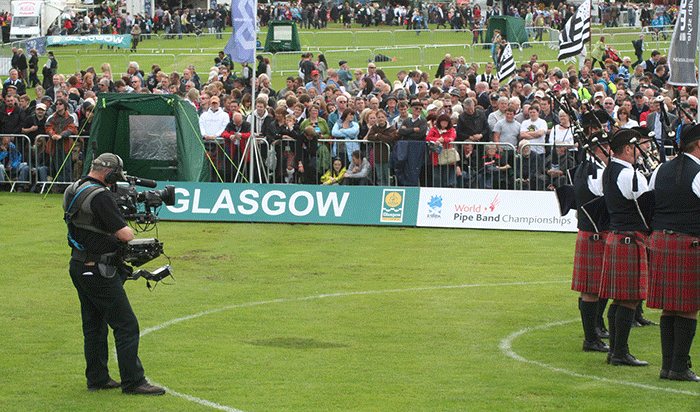
There are of course widely differing views on all this, but one conclusion which can be reached is that there may be a good argument for allowing the adjudicators to assess performances from a position above the bands. That would present some practical problems which would need to be overcome, but the idea could be worth trialling to test out if it would lead to an improvement in the consistency of adjudication.
It could also allow judges to be seated, in the same position; and may even open the door to reconsideration of the merits of a single type of ‘Pipe Band Adjudicator’ rather than having three separate adjudication disciplines, an idea suggested as far back as 1947 by Drum Major AD Hamilton but strongly resisted ever since.
All this of course is for the RSPBA to consider but perhaps the issues outlined in this article might help explain that there are many factors outwith the control of the adjudicators which affect the results of competitions. They might also offer food for further thought by all interested parties.
- Read part 1 of this article here.

